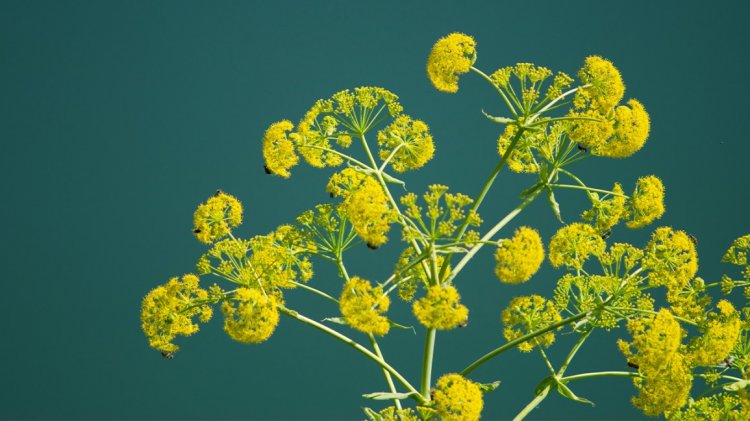Asafoetida: The Spice India Is ‘Growing’ Interest In

Asafoetida, a smelly, acrid spice beloved by Indians, has been used to lace their food for centuries. But it was never cultivated in the region - until now.
Last week, scientists planted about 800 saplings of the plant in Lahaul and Spiti, a cold desert nestled in the Himalayan mountains, exactly two years after India's Council of Scientific and Industrial Research (CSIR) imported six varieties of seeds from Iran.
"We are confident it will work," says Dr Ashok Kumar, one of the scientists who painstakingly germinated the seeds in a lab. He says this was necessary because for every 100 seeds, only two sprouts. The plant, it turns out, has a vexing habit of going dormant.
"It goes to sleep to adapt to harsh conditions," Dr Kumar says.
Asafoetida, or hing as it's commonly known in India, is a perennial, flowering plant that largely grows in the wild. It thrives in dry soil in temperatures under 35C. So, India's tropical plateaus and plains, humid coast and heavy monsoons rule out much of the country for hing farming.
Instead, Indians rely on imports mostly from Afghanistan, Kazakhstan and Uzbekistan - worth more than $100m in 2019 - to get their fix.
This is surprising news for many Indians who would argue that hing is inherently Indian. For many Hindus and Jains, who don't eat onion and garlic because of dietary restrictions, hing's pungency makes it an ideal substitute.
"I use it in all my dals, and I don't cook them with onion or garlic," says Marryam Reshii, food writer and author of The Flavour of Spice. "When you have hing in your food, that tiny whiff of it... it just tastes so, so great!"
Ms Reshii calls herself a "hing lover" - she even put out a detailed thread earlier this week clarifying the origins and uses of her favourite spice.
She says hing's unique smell, a strong, bitter odour, makes it "unlike any other spice".
It even derives its name from that scent - asafoetida in Latin means "fetid gum". The smell is so strong that raw hing, a greyish-white sticky resin collected from the roots, is dried and mixed with flour - wheat in India's north, rice in the south - to turn it into an edible spice. Wholesalers who import hing use tiny amounts of it to make graded variations that sell in the form of blocks, coarse granules or a fine powder.
Although the Persians once called it "the food of the gods", hing is now barely found in cuisines outside of India. In other parts of the world it's either used for medicinal reasons or as an insecticide! But in India, which, by some estimates, accounts for 40% of the world's hing consumption, it's hard to overstate its role in the kitchen.
A dash of it while cumin seeds and red chillies splutter in hot ghee can make an everyday dal sing. Across the country, it seasons delicately spiced soups (shorbas) and fresh relishes (koshambirs) and spikes leafy greens and vegetables tossed in ginger, turmeric and tomatoes. In the north, Kashmiri Hindus stir it in with lamb, red chillies, fennel and dried ginger to make their classic rogan josh and southerners use it to temper their sambars, a variety of steaming lentil stew topped with mustard seeds and curry leaves. It is what sets apart Kolkata's famed hing kachoris (pastries fried to a crisp) and the fluffy idlis (steamed rice cakes) of the temple town of Kanchipuram.
It is also part of several Ayurvedic remedies. It is known to battle flatulence and is often recommended in recipes that involve gassy foods such as lentils or beans.
And yet, it is not exactly from India. But what climate hindered, history and trade enabled.
"The history of this land is very, very old," says Dr. Manoshi Bhattacharya, a history enthusiast who works with medical nutrition therapy. "The fact that asafoetida features in prasad [religious offerings] is testimony to its antiquity."
"There was always so much traffic, so much movement - Arabs, Persians, Greeks, Africans. When men move, they take their food with them and when they leave a place, they take some of that food with them."
Her "educated guess" is that hing came to India from Afghanistan as early as 600 BC – it is mentioned in Hindu and Buddhist texts from the time. It also makes an appearance in the grand Hindu epic, Mahabharata, whose composition historians believe began around 300 BC.
"This was all one land," Dr. Bhattacharya says, pointing to the fact that one of the epic's main characters, the blindfolded queen Gandhari, is believed to be from modern-day Kandahar.
And over centuries hing wove its way into Indian menus, especially, Dr. Bhattacharya adds, as Hindus "sanctified" it as a substitute for onion and garlic. From hingu in Sanskrit, it became hing in Hindi, imgu in Kannada, inguva in Telugu, him in Bengali and so on. It had names everywhere else too: the Persians called it anghuzeh, the Greeks, aza, and Arabs, haltit or tyib; in Swahili, it was mvuje. The Europeans were less friendly, calling it devil's dung and stinking gum.
Food writers now describe it as a flavour that is "startling" and "shocking" to the Western palate, but the ancient Romans and Greeks cooked with it. It's unclear why it then disappeared from that part of the world. Some food historians believe it was widely used alongside silphion, an aromatic cousin that has now become extinct.















































